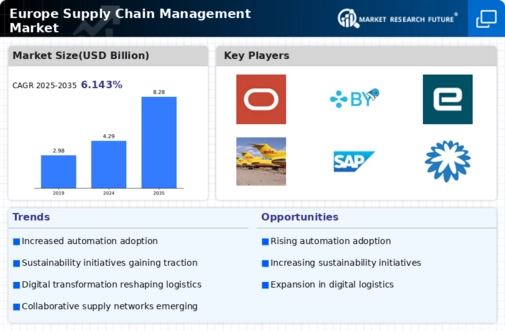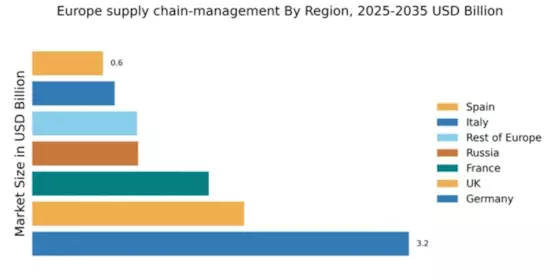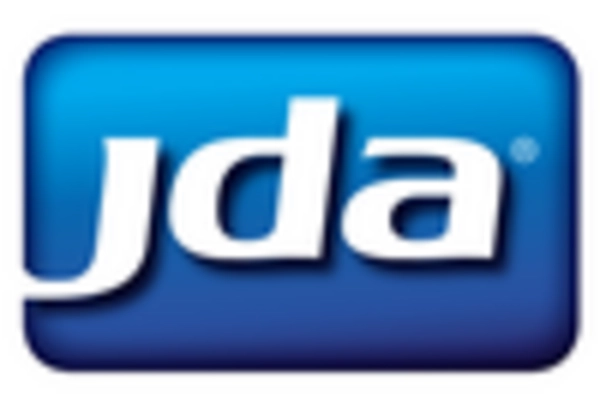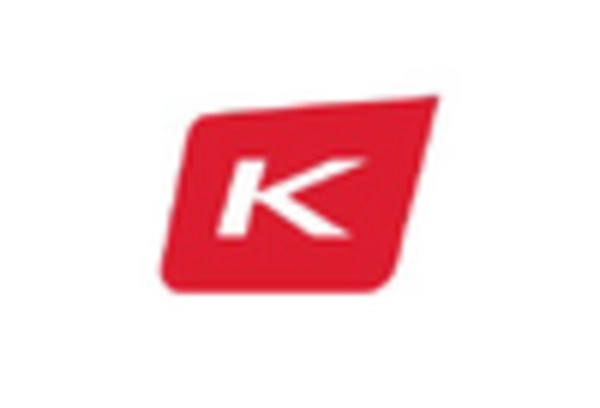Collaboration and Partnerships
Collaboration and partnerships are emerging as vital drivers in the supply chain-management market in Europe. As companies face increasing complexity in their supply chains, the need for collaborative approaches becomes apparent. Strategic alliances with suppliers, logistics providers, and technology firms can lead to enhanced efficiency and innovation. For instance, joint ventures can facilitate shared investments in technology and infrastructure, reducing individual costs and risks. Moreover, collaborative platforms enable real-time information sharing, which can significantly improve decision-making and responsiveness. This trend suggests that companies are likely to prioritize building strong partnerships to navigate the challenges of modern supply chains, ultimately leading to improved performance and competitiveness.
Regulatory Compliance and Standards
In Europe, the supply chain-management market is significantly influenced by stringent regulatory compliance and standards. The European Union has implemented various regulations aimed at ensuring safety, quality, and environmental sustainability within supply chains. For example, the General Data Protection Regulation (GDPR) has necessitated changes in data handling practices, impacting how companies manage their supply chains. Compliance with these regulations often requires investment in new systems and processes, which can be costly but essential for avoiding penalties. As businesses navigate these complexities, the demand for compliance-focused supply chain solutions is likely to increase, driving growth in the market. This regulatory landscape compels companies to adopt more robust supply chain strategies to ensure adherence to evolving standards.
Sourcing and Procurement Strategies
In the context of the supply chain-management market in Europe, evolving sourcing and procurement strategies are becoming increasingly critical. Companies are recognizing the need to diversify their supplier base to mitigate risks associated with supply disruptions. This trend is particularly relevant in light of geopolitical tensions and trade uncertainties that can impact supply chains. By adopting a more strategic approach to sourcing, businesses can enhance their resilience and flexibility. Additionally, the focus on sustainable procurement practices is gaining traction, as companies seek to align their supply chains with environmental and social governance (ESG) criteria. This shift not only helps in risk management but also appeals to a growing segment of environmentally conscious consumers, thereby influencing purchasing decisions.
Technological Advancements in Logistics
The supply chain-management market in Europe is experiencing a notable shift due to rapid technological advancements. Innovations such as artificial intelligence (AI), machine learning, and the Internet of Things (IoT) are enhancing operational efficiency and decision-making processes. For instance, AI-driven analytics can optimize inventory management, reducing costs by up to 20%. Furthermore, the integration of IoT devices allows for real-time tracking of goods, which is becoming increasingly essential in a competitive landscape. As companies adopt these technologies, they are likely to see improvements in supply chain visibility and responsiveness, which are critical for maintaining customer satisfaction. This trend indicates a growing reliance on technology to streamline operations and improve overall supply chain performance.
E-commerce Growth and Consumer Expectations
The rise of e-commerce in Europe is reshaping the supply chain-management market, as consumer expectations for faster delivery and seamless service continue to escalate. With online sales projected to reach €500 billion by 2025, companies are compelled to enhance their supply chain capabilities to meet these demands. This shift necessitates investments in logistics infrastructure and technology to facilitate quicker order fulfillment and efficient last-mile delivery. As a result, businesses are increasingly focusing on optimizing their supply chains to improve speed and reliability. The growing importance of customer experience in e-commerce is likely to drive innovation and competition within the supply chain-management market, as companies strive to differentiate themselves through superior service.


















Leave a Comment